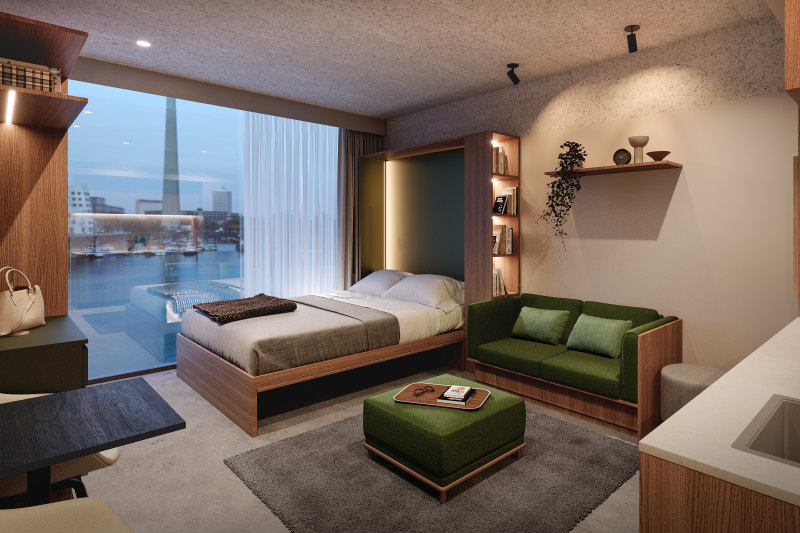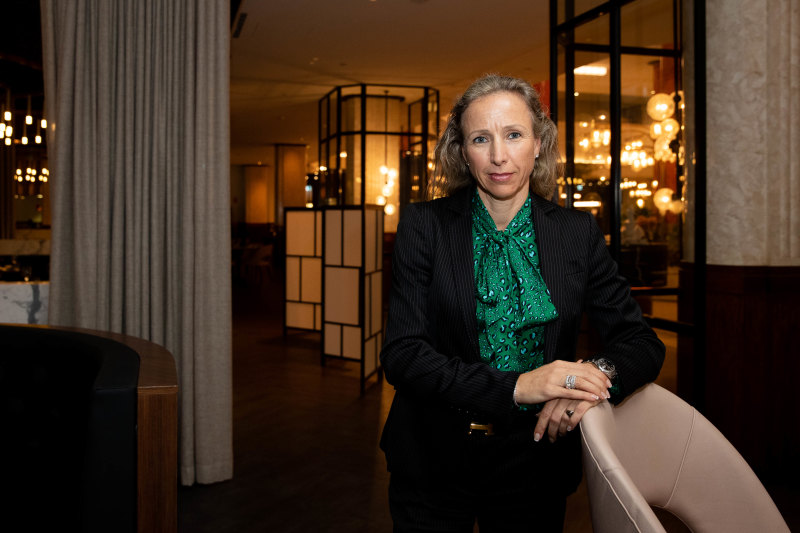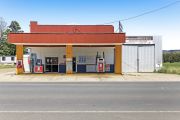
Developers turn to micro apartments to fix housing crisis
Record low vacancy rates, a cost-of-living crunch and demand for more flexible living options from digital nomads and Millennials are driving plans by developers and fund managers to build thousands of micro apartments in big cities across Australia.
These apartments are typically under 32 square metres and designed to include kitchenettes, small living areas and a bathroom, while renters access shared communal lounges and co-working spaces.
Importantly, they can be located close to the major CBDs, providing accommodation for those priced out of the traditional apartment market.

Among those looking to tap into the market for smaller, more affordable units is hotel developer, operator and fund manager Pro-invest Group.
It is sounding out investors for a $500 million raising that will fund an initial pipeline of 2000 “flex” apartments. Many of these will be developed out of older hotels or vacant office buildings.
The average apartment size would be around 25 square metres – less than half the size of a typical 55-square-metre serviced apartment and equivalent to modern student accommodation – but will include a kitchenette, toilet and bathroom. All units will be fully furnished.
Amenities such as co-working spaces, gyms and communal areas will be included as part of an offering expected to appeal to expats, business travellers, digital nomads, new migrants and seconded workers who don’t want to be locked into long-term leases.
Importantly, Pro-invest’s flex apartments will be cheaper than a typical build-to-rent unit, which to date have been developed as a premium rental product targeted at young, upwardly mobile professionals.

“We see flex-living as one of the fastest growing sub-segments of the multifamily [or build-to-rent] sector as councils globally see the offering of smaller and more flexible accommodation solutions a way to take pressure off more people wanting to be in urban environments,” said Sabine Schaffer, Pro-invest co-founder and Europe CEO.
In Europe, Ms Schaffer said institutional investors had been allocating funds into the well-established co-living sector – a budget-style accommodation aimed at key workers, an offering which typically includes shared bathrooms and kitchens.
“But we think the flex-living model is better suited in Australia. Given our team’s European expertise, we know what works and what does not,” she said.
Pro-invest co-founder Ron Barrett, who flagged the fund manager’s move into build-to-rent earlier this year, said the focus would be on converting or repurposing existing properties such as older hotels and B and C grade office towers.
“We’re very conscious that there are a lot of older buildings that need to be utilised,” Mr Barrett said.
Ms Schaffer said Pro-invest’s flex living offering would cater to people needing somewhere to stay for three days, three weeks or three months (or longer).
“The profile [of flex tenants] varies from those in the early 20s to those in their early 30s. It could be people on secondment that have come here for six months, or a young couple that like to travel around, but also want to save a bit of money to make a down payment on their first home,” she said.
“The target audience for build-to-rent are people in their mid-30s and older with some level of income able to pay higher rents.”
“Flex rents sit below build-to-rent, which are typically 20 per cent above the traditional rental market,” said Pro-invest head of development Tim Sherlock.
“We’ve developed 6000 hotel rooms from a standing start and will do a similar thing with flex apartments.
“We are currently talking to international parties, and we hope to be able to advance those discussions by the end of the year and realise assets in our pipeline.”
Mr Sherlock said Pro-invest hoped to have its first flex building operational within 12 months.
Another player in the micro apartment sector is Nightingale, which completed 54 micro apartments in Sydney’s Marrickville earlier this year after partnering with a church-based not-for-profit that owned the land.
The apartments, which are rented out at $395 to $440 a week, were offered by a ballot system to singles and couples who had to meet income and asset thresholds. Not surprisingly the opportunity was twice oversubcribed.
It is now a model that the NSW government is looking at rolling out more broadly, including with incentives such as scrapping the developer contributor fee.
“We are working with local government about how we can look at expedited planning pathways and planning approvals and waived developer charges to make these projects more viable,” said NSW Housing Minister Rose Jackson.











